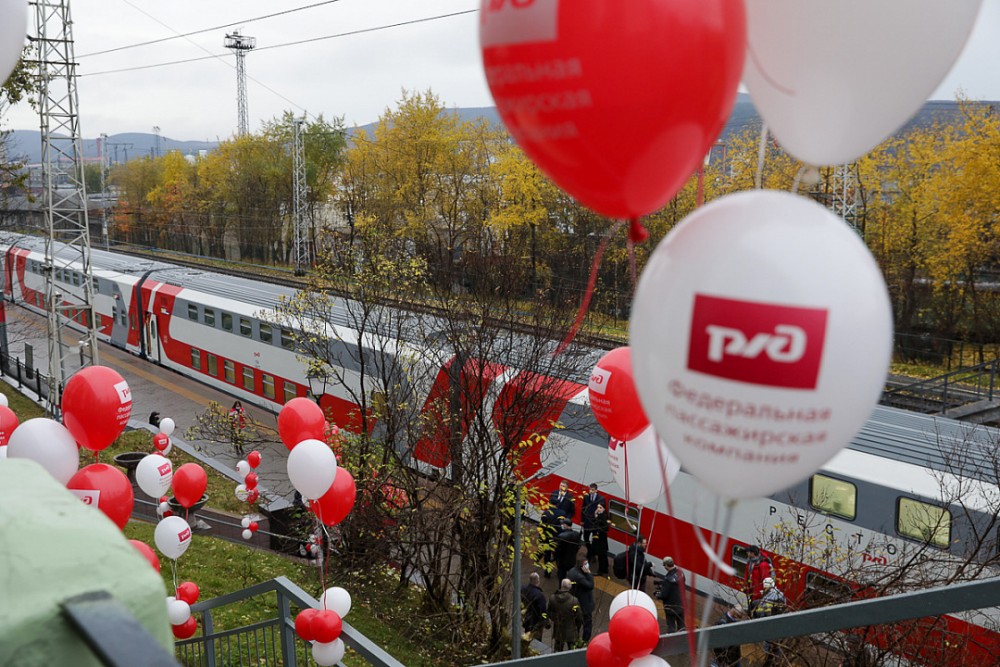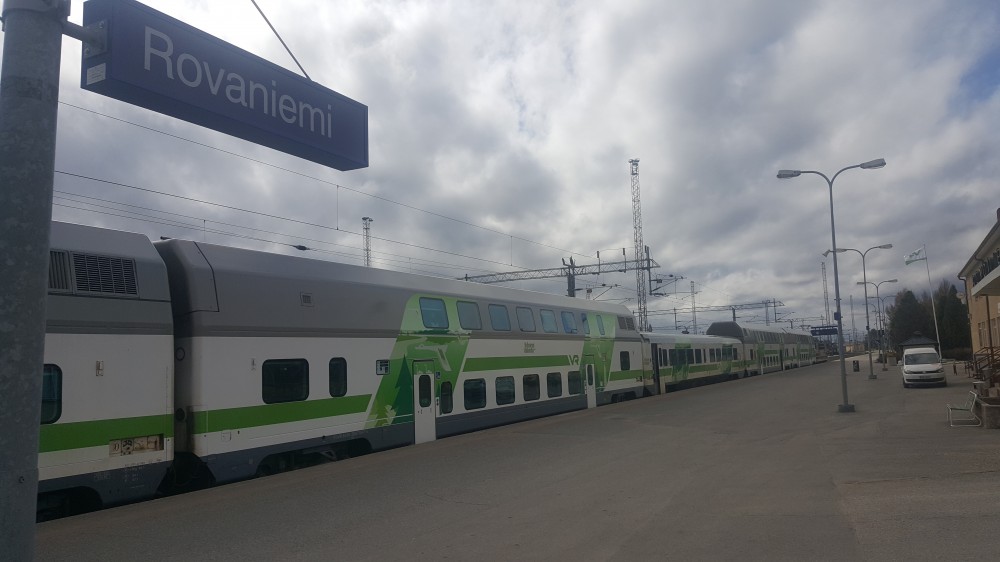A double-decker train has begun operations linking Murmansk to the rest of Russia
It's the first double-decker train north of the Arctic Circle.

The first double-decker train leaving Murmansk for St. Petersburg on Monday was also the first passenger train to cross over the new railway bridge over the Kola River. The bridge is restored after the old collapsed during flooding this spring.
The event also marked the 105th anniversary of Murmansk railway station. Built mainly by labor camp prisoners, the railway to the ice-free port in the north opened in 1916.
[Previously: Russia’s rail link to the port of Murmansk is severed by a bridge collapse]
“This is another page in our systematic work to improve quality of long-distance trains,” said Oleg Belozerov, CEO and Chairman of the Management Board of Russian Railways.
St. Petersburg to Murmansk is the thirteenth route in Russia served by double-decker trains.
“This allows residents of the region and guests to the Arctic capital to travel north faster and more comfortably,” said Murmansk governor Andrey Chibis at the festivities on platform No. 1 minutes before the train had departure.
More than 600,000 passengers travel annually to and from Murmansk by train, of which the St. Petersburg route counts for 30 percent.
The train has 11 wagons with double or four-bed compartments, a restaurant wagon and seats for passengers with limited mobility. In total, the train can carry 602 passengers, which is one-third more than the standard single-deck train.
Murmansk is the third Arctic railway to be served by double-decker cars and the northernmost.
In Alaska, the double-decker train traveling between Anchorage and Fairbanks, south of the Arctic Circle, uses the upper-deck as a dome for tourists to view the panorama. In Finland double-decker trains from both Helsinki and Turku regularly serve Rovaniemi, whose station lies just south of the Arctic Circle, but some double-decker trains continue on north to Kemijarvi.
CORRECTION: An earlier version of this story incorrectly reported that the Murmansk train was the only double-decker train to cross north of the Arctic Circle. This story has been updated to correct that statement and add further information.

